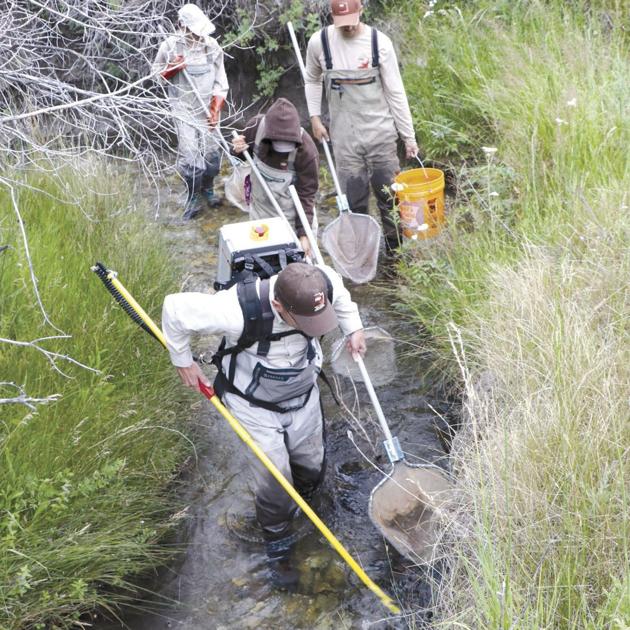Box Elder County, where dry desert mountain ranges and the Great Salt Lake dominate much of the landscape, isn’t often thought of as a place to catch state record-caliber fish.
However, the mountainous northwest corner of the state happens to be the only area in Utah where a certain subspecies of cutthroat trout can be found, making it the go-to location for anyone looking for Yellowstone cutthroat in the state.
The Yellowstone cutthroat is native to the Snake River drainage, a watershed whose southern boundary encompasses the Raft River Mountains of Box Elder County. The fish can be found in a few streams draining off the north slope of this range, which reaches nearly 10,000 feet in elevation and contains the highest point in the county.
The waterways here don’t look like those typically found in fly-fishing magazines. One can often cross them in a single bound.
Locals know the area as prime hunting and fishing grounds, but it sees relatively few visitors. Traditionally, most outsiders coming to the area are rock climbers and campers on their way to City of Rocks National Reserve across the border in Idaho.
However, that has changed in recent years following the start of the Utah Cutthroat Slam, a challenge to anglers to catch all four subspecies of cutthroat that exist naturally in Utah.
Launched in 2016, the Utah Cutthroat Slam raises funds for cutthroat restoration work in the state. Those who take it on pay a $20 registration fee and receive a certificate of completion, a medallion, and bragging rights for catching all four types — Yellowstone, Bonneville, Colorado and Bear River.
To date, nearly 3,000 people have registered for the challenge, raising more than $54,000 for native cutthroat restoration efforts in Utah, according to the most recent figures from the Utah Division of Wildlife Resources. 2020 was the biggest year yet for the effort, with 780 registrations and approximately $14,000 raised.
Because it’s the only place in Utah where they can be found in their native range, it’s only natural that the state catch-and-release record for the Yellowstone cutthroat would come from Box Elder County. That record was broken on three separate occasions this year — an indication that restoration efforts are working.
The first record-breaking catch of 10 1/2 inches was set by Michael Christiansen at Johnson Creek on June 14. It was broken less than a month later, this time on the left fork of Johnson Creek on July 8, when Samuel Jenkins caught one measuring 12 1/2 inches long. The current record is held by Kelly Anderson, who caught a 14-incher out of Johnson Creek on Oct. 3.
Johnson Creek, which flows down from the highlands at the west end of the Raft River range near the small ranching community of Yost, is at the center of the effort to restore and maintain the Yellowstone cutthroat in Utah Nearby Wildcat Creek is also a stronghold for the fish.
A survey by DWR biologists in August 2019 on Johnson Creek found substantial numbers of Yellowstone cutthroat, another sign that restoration efforts that began in 2011 are starting to pay off.
Matt McKell, the lead biologist on that survey, said successful reintroduction efforts will help keep the Yellowstone cutthroat off of the federal Endangered Species List and leave management decisions in the state’s hands.
The Yellowstone cutthroat record was one of 10 new Utah fishing records set in 2020.
The DWR began tracking records for harvested fish in the early 1900s. Since then, the record fish program has expanded to also include catch-and-release records and records for fish caught using alternate tackle, like spearfishing, archery and setline.
There are currently 33 state catch-and-keep angling records, 37 state catch-and-release records, 21 state spearfishing records, six state setline records and three state archery records in Utah. All the state fishing records are listed on the DWR website.
“This has been somewhat of a record year for new fishing records — I don’t remember ever getting so many new ones in one year,” said Craig Walker, the DWR’s aquatics assistant chief.
Credit: Source link































